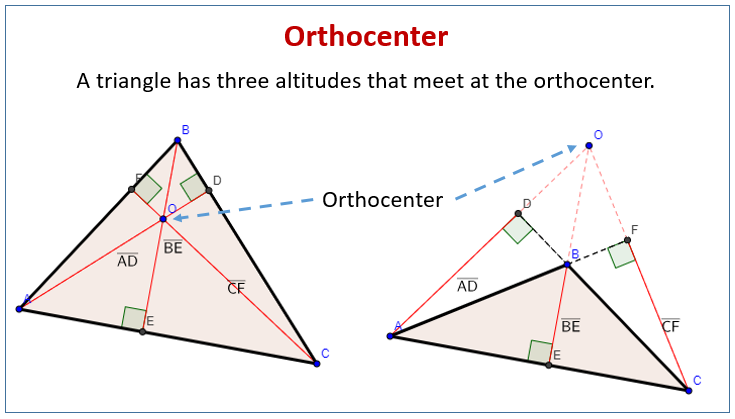

It will have three congruent altitudes, so no matter which direction you put that in a shipping box, it will fit. What about an equilateral triangle, with three congruent sides and three congruent angles, as with △ E Q U below?

Not every triangle is as fussy as a scalene, obtuse triangle. What about the other two altitudes? If you insisted on using side G U ( ∠ D) for the altitude, you would need a box 9.37 c m tall, and if you rotated the triangle to use side D G ( ∠ U), your altitude there is 7.56 c m tall. You would naturally pick the altitude or height that allowed you to ship your triangle in the smallest rectangular carton, so you could stack a lot on a shelf.Īltitude for side U D ( ∠ G) is only 4.3 c m. Think of building and packing triangles again.
#Altitude geometry picture how to
How to Find the Altitude of a TriangleĮvery triangle has three altitudes. To get the altitude for ∠ D, you must extend the side G U far past the triangle and construct the altitude far to the right of the triangle. To get that altitude, you need to project a line from side D G out very far past the left of the triangle itself. The altitude from ∠ G drops down and is perpendicular to U D, but what about the altitude for ∠ U? We can construct three different altitudes, one from each vertex.įor △ G U D, no two sides are equal and one angle is greater than 90 °, so you know you have a scalene, obtuse (oblique) triangle. The height or altitude of a triangle depends on which base you use for a measurement. How big a rectangular box would you need? Your triangle has length, but what is its height? Imagine you ran a business making and sending out triangles, and each had to be put in a rectangular cardboard shipping carton.

A triangle gets its name from its three interior angles. To find the altitude, we first need to know what kind of triangle we are dealing with. Use the Pythagorean Theorem to calculate altitudes for equilateral, isosceles, and right triangles.Construct altitudes for every type of triangle.Locate the three altitudes for every type of triangle.Recognize and name the different types of triangles based on their sides and angles.After working your way through this lesson and video, you will be able to:


 0 kommentar(er)
0 kommentar(er)
